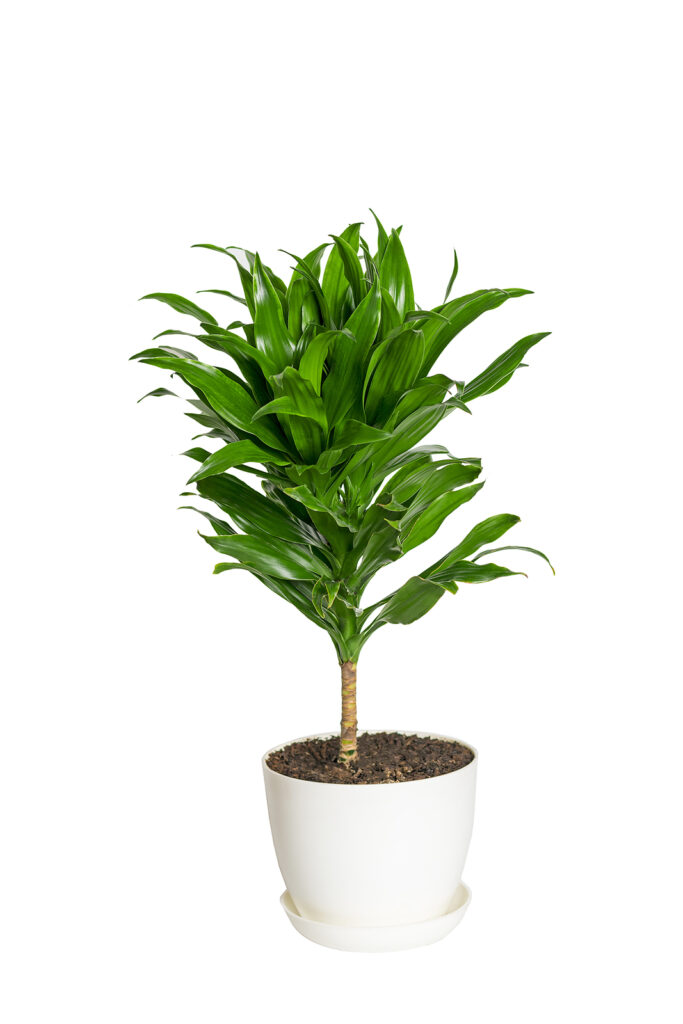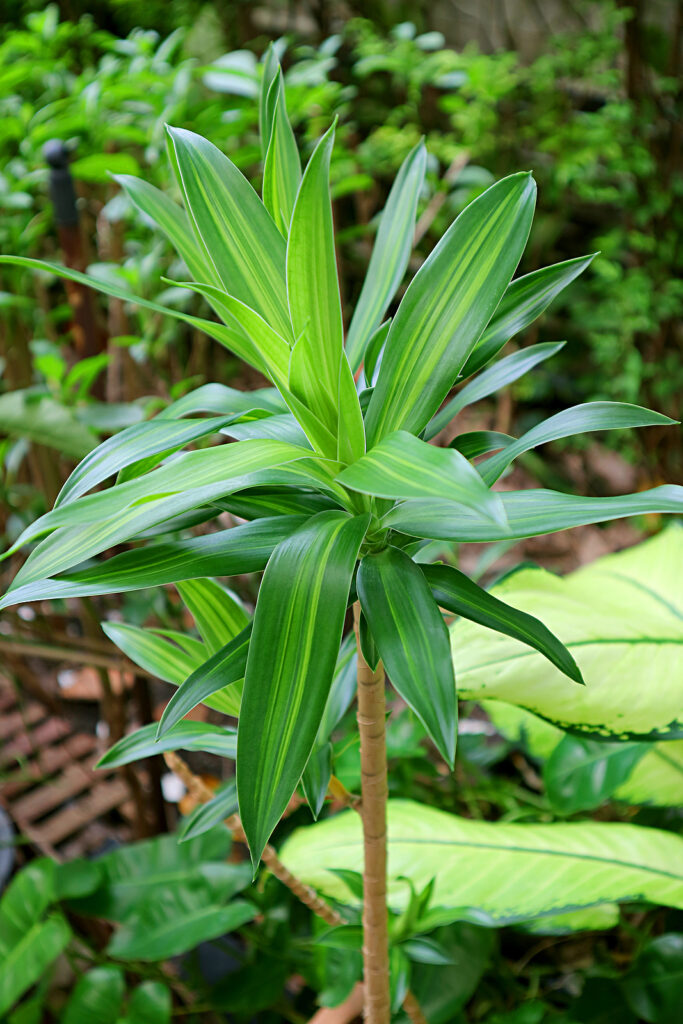Dracaenas are shrubby or treelike evergreen tropical plants. Dracaenas vary in form; some are short with strappy leaves; some are taller with broader leaves. Plants can grow to 10 feet (3m) tall and leaves to 2 feet (60cm) long.
Dracaenas are very popular houseplants. there are several species and cultivars. Most Dracaenas have singe unbranched stems that can be either succulent or woody. Some have dark green leaves, some are striped. In subtropical regions, Dracaenas can be grown outdoors.
Grown indoors Dracaenas need bright to moderate light, no direct sun. Outdoors Dracaenas are best grown in partial shade. Direct sun will often cause leaves to droop.
Dracaena is a genus of about 40 species. They are native to forests and scrub in the Canary Islands and throughout tropical Africa.
Get to know Dracaena
- Plant type: Tropical evergreen perennial
- Growing Zones and range: Zones 10-12
- Hardiness: Warm conditions, 65°-72F (20°-22°C)
- Optimal growing temperature: day 68°-70F (18°-21°C), cooler at night
- Height and width: 24 inches to 10 feet (60cm-3m) tall or more depending on the variety
- Foliage: Trunk-like stems with long, tapering leaves
- Uses: Houseplant, tropical garden
- Common name: Dracaena
- Botanical name: Dracaena spp.
- Family: Dracaenaceae
- Origin: Canary Islands, throughout tropical Africa
Where to plant Dracaena
- Dracaenas need light shade to medium lights; leaf variegation on leaves may fade in low light.
- Grow dracaenas in all-purpose potting soil.

How to water and feed Dracaena
- Keep the soil evenly moist; reduce watering in winter.
- Fertilize dracaena once a year with an all-purpose fertilizer.
Dracaena care
- Maintain humidity around plants; too little humidity results in brown tips and yellow edges. Set plants on a tray filled with pebbles and water.
Growing Dracaena as a houseplant
- Dracaena needs bright light, ‘Janet Craig’ and ‘Warneckii’ can gradually adapt to limited light.
- Dracaena need average to warm temperature and medium to high humidity for new leaf growth. New leaf growth is inhibited by cool, dry air.
- The soil should be kept moderately dry.
- Fertilize Dracaena once every three months in spring and summer.
Dracaena common problems
- Low light causes thin stems and faded leaves.
- Browned edges indicate over-drying and/or salt buildup.
Dracaena propagation
- Take tip or stem cuttings, or air layer leafless stem sections.

Dracaena varieties to grow
- Dracaena deremensis, striped dracaena. Green leaves striped with white and gray.
- Dracaena fragrans, corn plant. Green, corn-like foliage; outdoors this is an erect, evergreen shrub or tree that is very sparsely branched when young; leaves of older plants are confined to the upper parts of stems; grows 15 to 50 feet (5-15m) tall.
- Dracaena marginata, dragon tree, also called red-margined dracaena and Madagascar dragon tree. Grows 6 to 15 feet (2-5m) tall; narrow, dark green leaves with maroon edges; slow-growing shrub or small tree often unbranches.
- Dracaena reflexa, Song of India dracaena has yellow and green striping.
- Dracaena sanderiana, lucky bamboo, ribbon plant. Grows to 5 feet tall, usually smaller; slightly wavy, lance-shaped leaves; commonly grown in vases and trays from small cuttings.
- Dracaena surculosa. Gold dust dracaena has gold-and-white spotted leaves.















